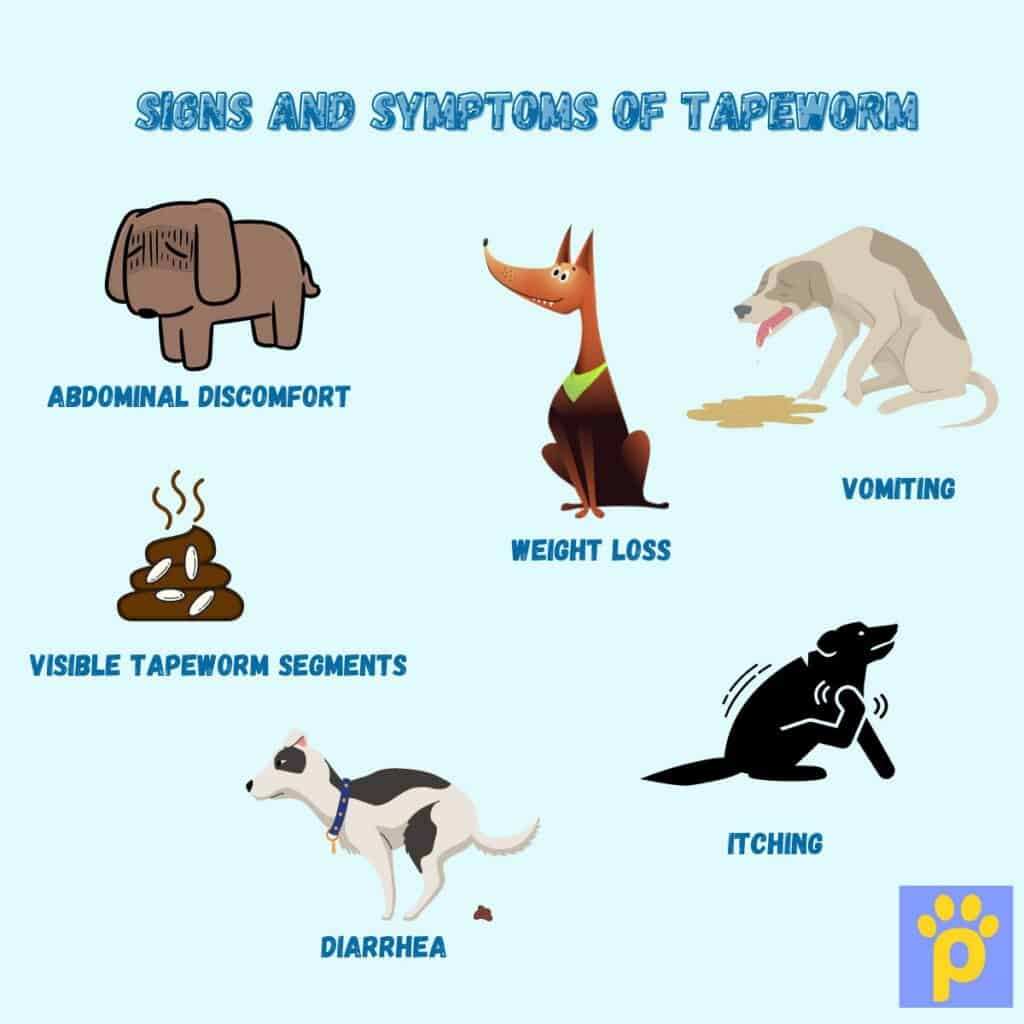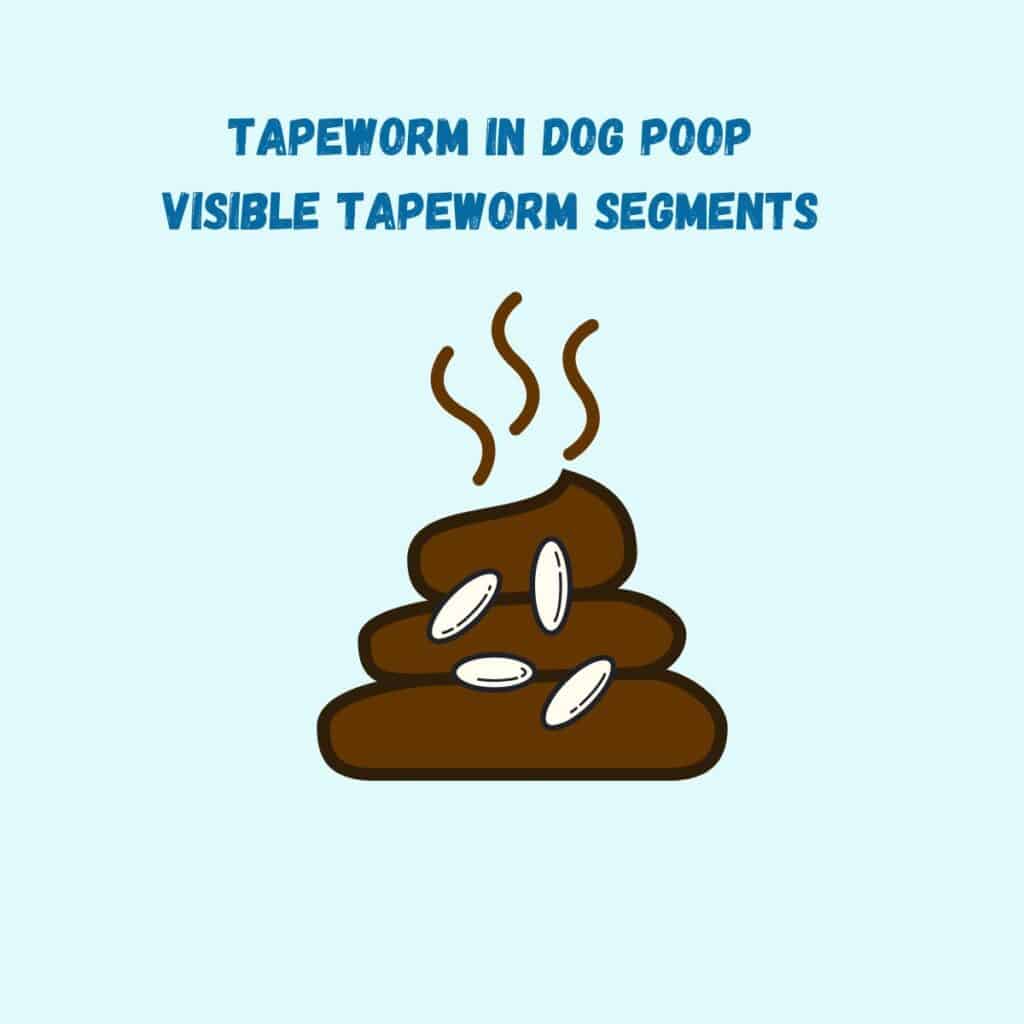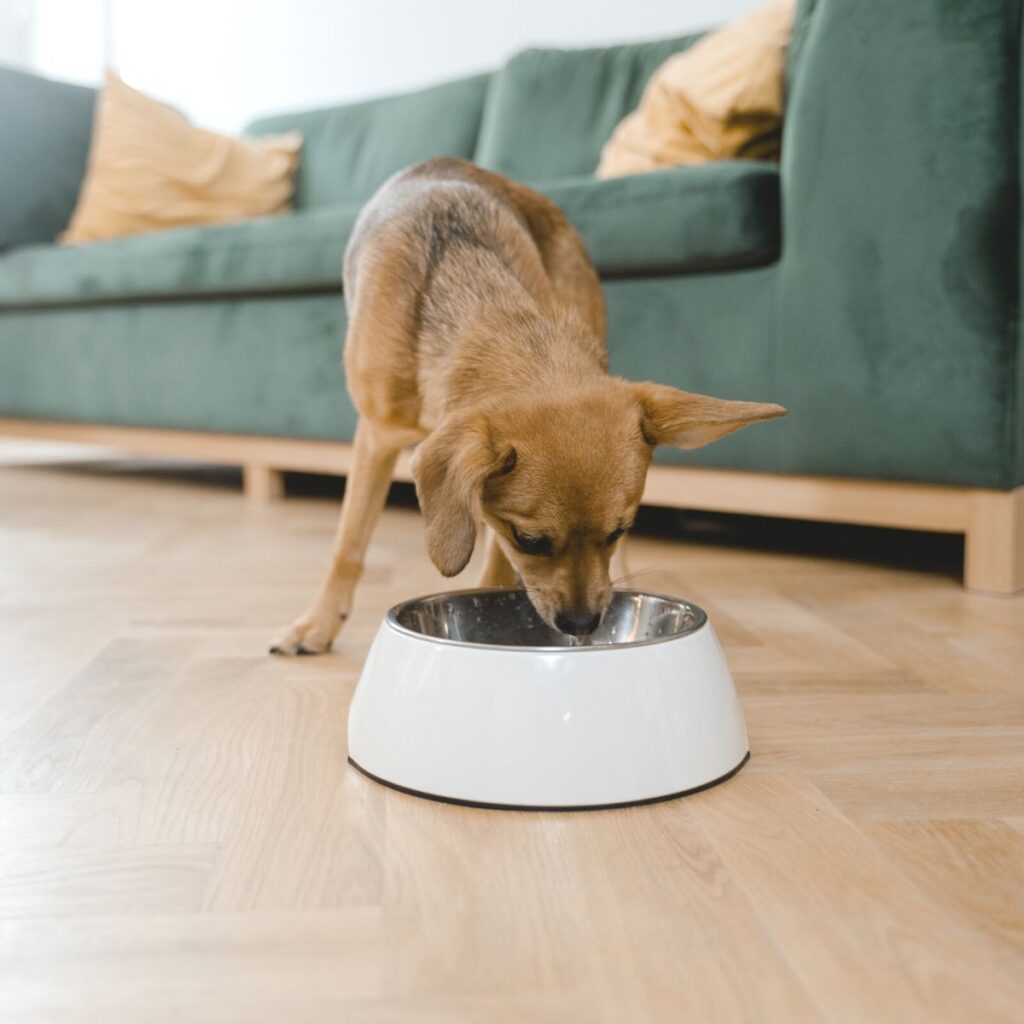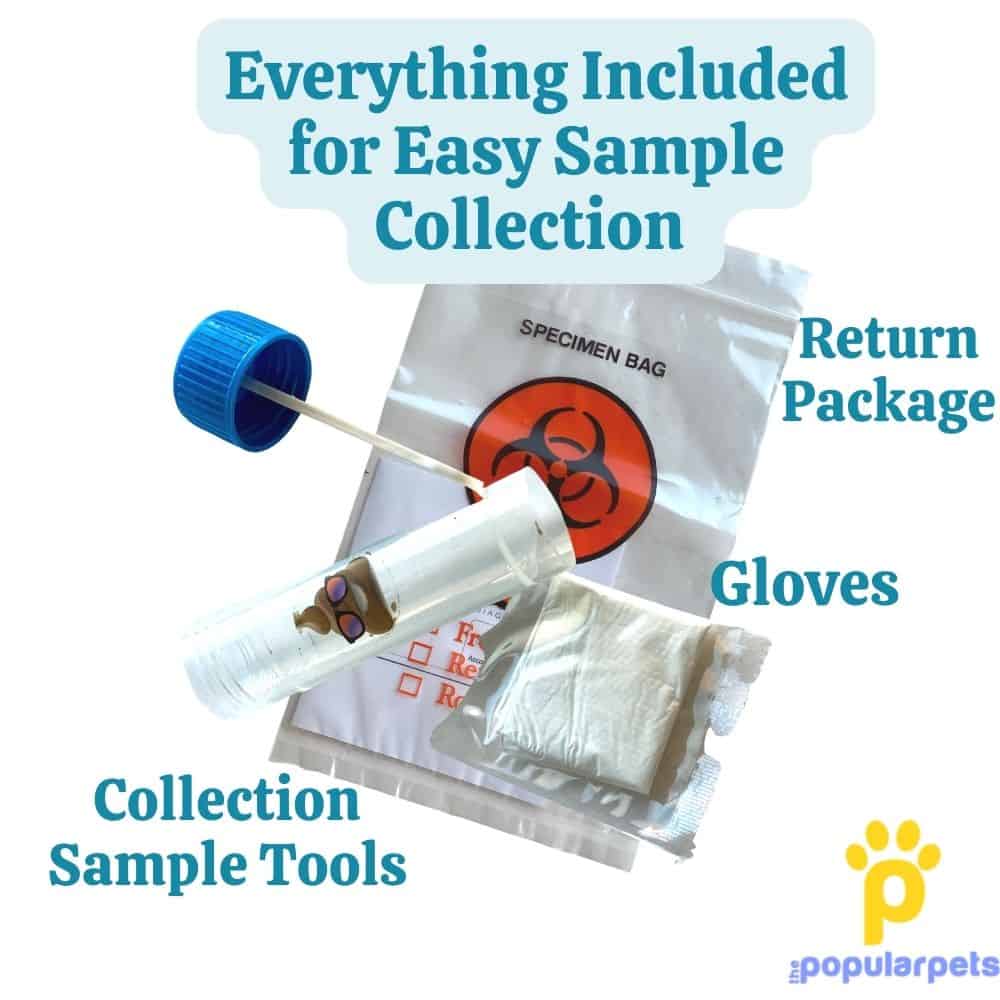We have talked a lot about worms on this site since dog worms, including tapeworms, are one of those issues that are so impactful to pet health and maybe an issue that is silently thwarting your pet and family wellness efforts. Tapeworms are a common parasite found in dogs that can cause a variety of symptoms. These parasites can be contracted by ingesting fleas or infected rodents, and can grow up to several feet long inside a dog’s intestines.

What are Tapeworms?
Tapeworms are a type of intestinal parasite that can infect dogs, cats, humans, and many other species around the world. They are flat, segmented worms that can grow up to several inches in length.
Description of Tapeworms
Tapeworms have a distinctive appearance that sets them apart from other types of intestinal parasites. They are long and flat, with a segmented body that resembles a strip of tape. Each segment contains both male and female reproductive organs, allowing the tapeworm to reproduce on its own.
Adult tapeworms reach lengths of up to 11” (30 cm). As the adult tapeworm matures, individual segments (proglottids) break off from the main body of the tapeworm and pass in the dog’s feces. The segments resemble grains of rice or cucumber seeds and are about 1/2” (12 mm) long and about 1/8” (3 mm) wide. Occasionally, they can be seen moving on the hairs around the anus, or more commonly, on the surface of freshly passed feces.
Types of Tapeworms
There are several different types of tapeworms that can infect dogs, including Dipylidium caninum, Taenia pisiformis, and Echinococcus granulosus. Dipylidium caninum is the most common type of tapeworm found in dogs and is usually transmitted through the ingestion of infected fleas. Taenia pisiformis is typically transmitted through the ingestion of infected rabbits or rodents, while Echinococcus granulosus is less common and is usually transmitted through the ingestion of infected sheep or other livestock.
How Do Dogs Get Tapeworms?
Dogs can become infected with tapeworms through a variety of different routes including:
- Ingesting infected fleas is one of the most common ways that dogs become infected with Dipylidium caninum.
- Ingesting the flesh of infected animals. Dogs can also become infected with tapeworms by ingesting the flesh of infected animals, such as rabbits or rodents, or by drinking contaminated water.
- Ingesting the larvae. In some cases, dogs can also become infected with tapeworms by ingesting the eggs or larvae of the parasite, which can be found in the environment.
Tapeworm Symptoms in Dogs
When tapeworms are present in a dog’s intestines, the tapeworm uses its hook-like mouthparts for anchoring to the wall of the small intestine. Tapeworms can cause a variety of symptoms, including weight loss, diarrhea, and vomiting.
When a dog has tapeworms, there are several symptoms that may indicate their presence. Here are some of the most common tapeworm symptoms in dogs:
- Visible Tapeworm Segments: One of the most obvious signs of tapeworms in dogs is the presence of small, white, rice-like segments around the dog’s anus or in their feces. These segments are actually the tapeworm’s egg packets, and they may move or wiggle on their own.
- Weight Loss: Tapeworms can cause weight loss in dogs, even if they are eating normally. This is because the worms are feeding on the dog’s nutrients, leaving them malnourished.
- Vomiting: Some dogs with tapeworms may experience vomiting, especially if the infestation is severe.
- Diarrhea: Tapeworms can also cause diarrhea in dogs, which can be loose or watery.
- Irritation and Itching: Dogs with tapeworms may experience irritation and itching around their anus, which can lead to excessive licking or scooting.
- Abdominal Discomfort: In some cases, dogs with tapeworms may experience abdominal discomfort or bloating.
If you suspect that your dog has tapeworms, it is important to take them to the vet for diagnosis and treatment. Your vet may prescribe medication to eliminate the tapeworms and will also recommend steps to prevent future infestations. Additionally, regular flea control and good hygiene practices can help reduce the risk of tapeworms in dogs.

What Do Tapeworms Look Like in Dog Poop?
When a dog has tapeworms, their feces may contain segments of the worm, but it is rare to see the entire worm in their poop. This is because tapeworms are made up of many individual segments that detach and pass out of the dog’s body in their feces. The individual segments may be difficult to spot, especially in loose or watery stool.
Short story, if you do not see pieces of tapeworms in your dog poops it does not mean your dog does not have tapeworms.
According to Malcolm Weir, DVM, MSc, MPH, tapeworm segments are small and flat, resembling grains of rice or sesame seeds. They are usually white or off-white in color and can be seen in the dog’s feces or on their fur around the anus. These segments may move or wiggle on their own and can be mistaken for small pieces of undigested food or other debris in the feces.

Are Tapeworms Dangerous to Dogs: Will Tapeworms Make My Dog Sick?
Tapeworms can be dangerous to dogs if left untreated. Although tapeworms do not typically cause serious illness, they can cause a variety of health problems if the infestation is severe or if the dog has other underlying health conditions.
One of the most common problems associated with tapeworms in dogs is weight loss. Tapeworms can interfere with a dog’s ability to absorb nutrients from their food, which can cause them to become malnourished over time. This can lead to a range of health problems, including weakness, lethargy, and a weakened immune system.

In rare cases, tapeworms can cause more serious health problems in dogs. For example, if a dog has a severe infestation of tapeworms, the worms can block their intestines, which can cause vomiting, diarrhea, and abdominal pain.
Additionally, tapeworms can be a source of infection for humans, especially children, who may accidentally ingest tapeworm eggs from contaminated surfaces or objects. This can cause a condition known as hydatid disease, which can be serious and even life-threatening in some cases.
How Do I Know For Sure My Dog Has Tapeworms: Detecting Tapeworms in Dogs
If you suspect that your dog has tapeworms, you can test your dog with a fecal sample for analysis, which can confirm the presence of tapeworm segments or eggs. You can do your own tapeworm fecal test from the comfort if your home or coordinate this testing with your vet as they may also conduct a physical exam to check for other signs of tapeworm infestation, such as weight loss or abdominal discomfort.

Treatment for Tapeworms
Treatment for tapeworms in dogs usually involves a medication that kills the worms, followed by a period of monitoring to ensure that the infestation has been fully eliminated. You can know for sure if your dog is free of tapeworms by retesting your dog with a home test kit. Your vet may also recommend steps to prevent future infestations, such as regular flea control and good hygiene practices.
Conclusion
In conclusion, tapeworm segments in dog poop are small and flat, resembling grains of rice or sesame seeds. While it is rare to see the entire worm in dog poop, the presence of these segments is a sign that your dog may have tapeworms and should be taken to the vet for diagnosis and treatment.
Looking to learn more about taking charge of your Dog’s Health? Learn about Pet Testing from The Popular Pets. Now offering pet testing for your the health of your pet and your peace of mind. Learn more about pet testing options.
You may also be interested in the Ultimate Guide to Heartworm
Diatomaceous Earth for Dogs and Cats FAQ
Diatomaceous earth is great for dogs and is safe to ingest and put on their skin, sniffing diatomaceous earth is not a problem but dog owners do need to be careful that dogs do not inhale DE further. The silica in DE can be harmful to dog and cat lungs, especially pets with respiratory issues. The many benefits of DE make it a useful pet wellness tool.
Since DE is an excellent addition to food due to its ability to kill parasites, bind collagen and support a healthy coat and joints, licking DE is not only beneficial but suggested. DE is safe for dogs but dog lovers should get food grade DE to be safe.
Diatomaceous earth will not harm dogs. DE is non-toxic and actually helpful for dogs due to its many wellness attributes. Pet lovers have found many benefits to adding DE to their pet’s food to help support a healthy coat and fend off parasites and on externally to help with fleas and ticks.
Tapeworm Signs and Symptoms FAQs
When a dog has tapeworms, their feces may contain segments of the worm. Tapeworm segments are small and flat resembling grains of rice or sesame seeds. They are usually white or off-white in color and can be seen in the dog’s feces. The individual segments may be difficult to spot, especially in loose or watery stool. They are usually white or off-white in color and can be seen in the dog’s feces or on their fur around the anus. These
Dogs are unable to get rid of tapeworms on their own and will need treatment. If the tapeworms persist they will continue to increase the tapeworm symptoms such as weight loss, itching, vomiting and diarrhea.
There are several medications that can kill tapeworms in dogs, including:
Praziquantel: This medication is highly effective at killing tapeworms and is often used as the first-line treatment for tapeworms in dogs.
Fenbendazole: This medication can be used to treat a variety of parasites, including tapeworms, and is often used in combination with praziquantel for maximum effectiveness.
Epsiprantel: This medication is less commonly used than praziquantel or fenbendazole but can be effective at killing tapeworms in dogs.
Nitroscanate: This medication is an alternative to praziquantel and fenbendazole and can be effective at treating tapeworms in dogs.
It is important to note that over-the-counter dewormers for dogs may not be effective at treating tapeworms, as they typically do not contain praziquantel, which is the most effective medication for killing tapeworms.

